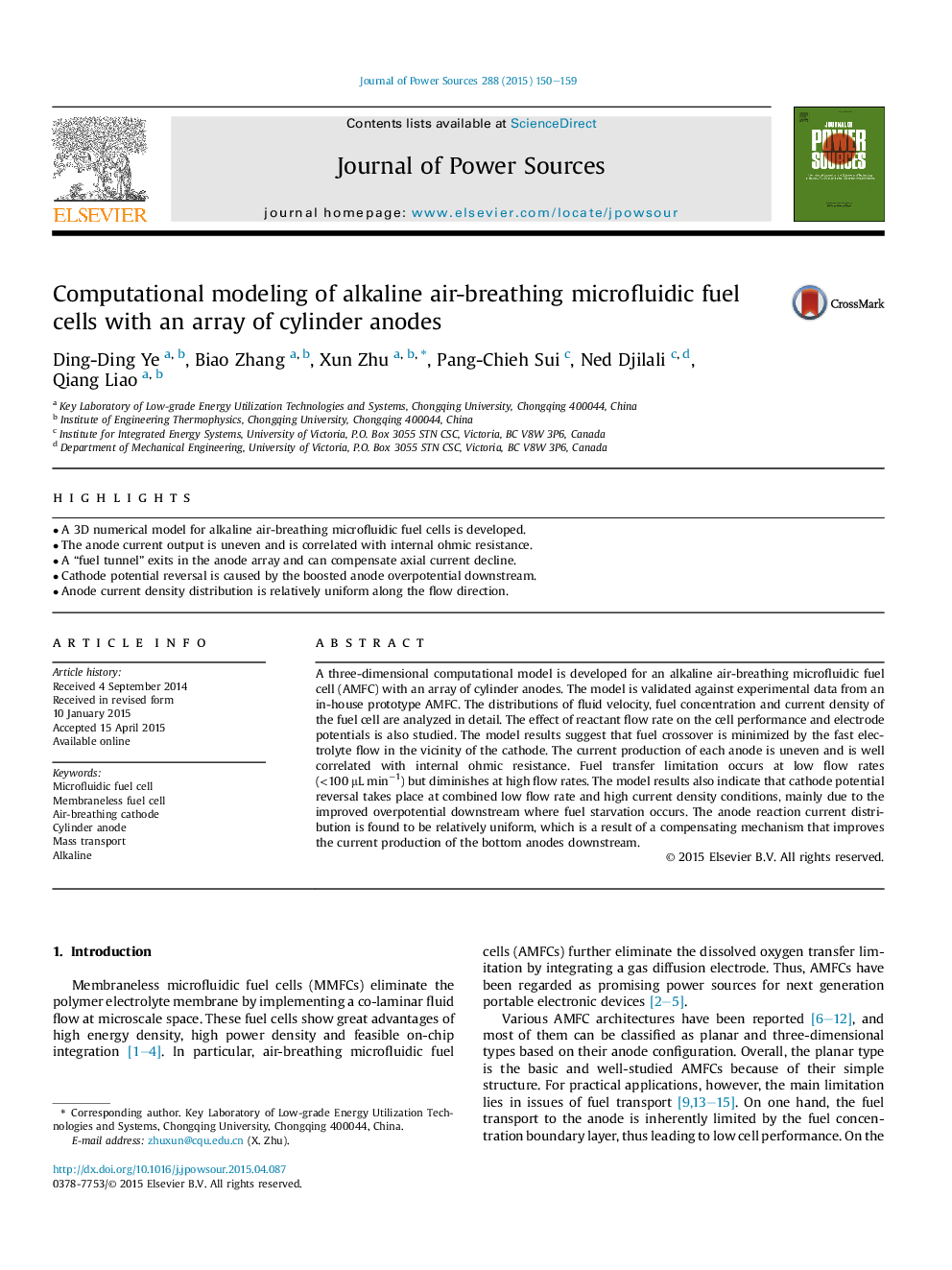| Article ID | Journal | Published Year | Pages | File Type |
|---|---|---|---|---|
| 7731966 | Journal of Power Sources | 2015 | 10 Pages |
Abstract
A three-dimensional computational model is developed for an alkaline air-breathing microfluidic fuel cell (AMFC) with an array of cylinder anodes. The model is validated against experimental data from an in-house prototype AMFC. The distributions of fluid velocity, fuel concentration and current density of the fuel cell are analyzed in detail. The effect of reactant flow rate on the cell performance and electrode potentials is also studied. The model results suggest that fuel crossover is minimized by the fast electrolyte flow in the vicinity of the cathode. The current production of each anode is uneven and is well correlated with internal ohmic resistance. Fuel transfer limitation occurs at low flow rates (<100 μL minâ1) but diminishes at high flow rates. The model results also indicate that cathode potential reversal takes place at combined low flow rate and high current density conditions, mainly due to the improved overpotential downstream where fuel starvation occurs. The anode reaction current distribution is found to be relatively uniform, which is a result of a compensating mechanism that improves the current production of the bottom anodes downstream.
Related Topics
Physical Sciences and Engineering
Chemistry
Electrochemistry
Authors
Ding-Ding Ye, Biao Zhang, Xun Zhu, Pang-Chieh Sui, Ned Djilali, Qiang Liao,
